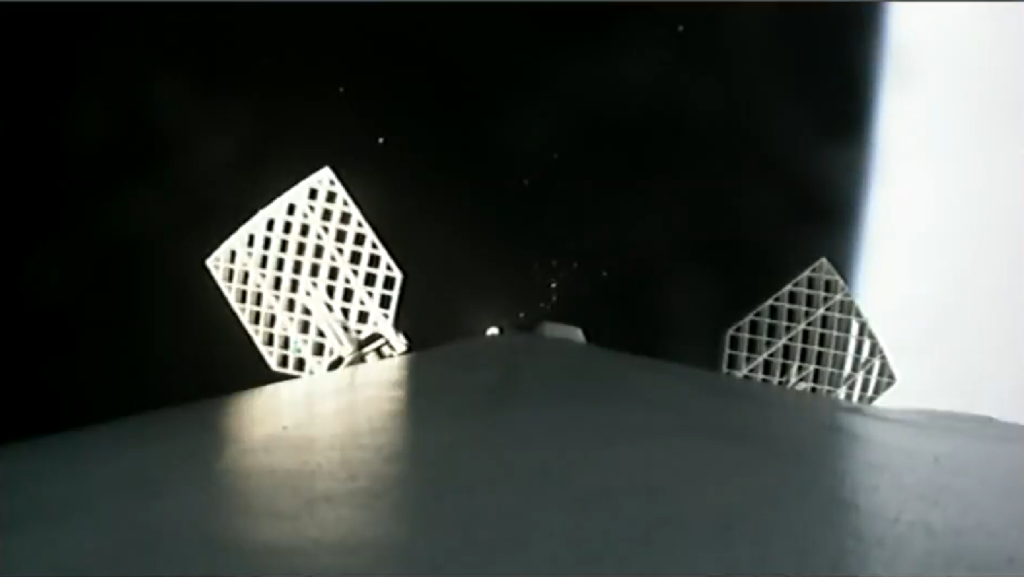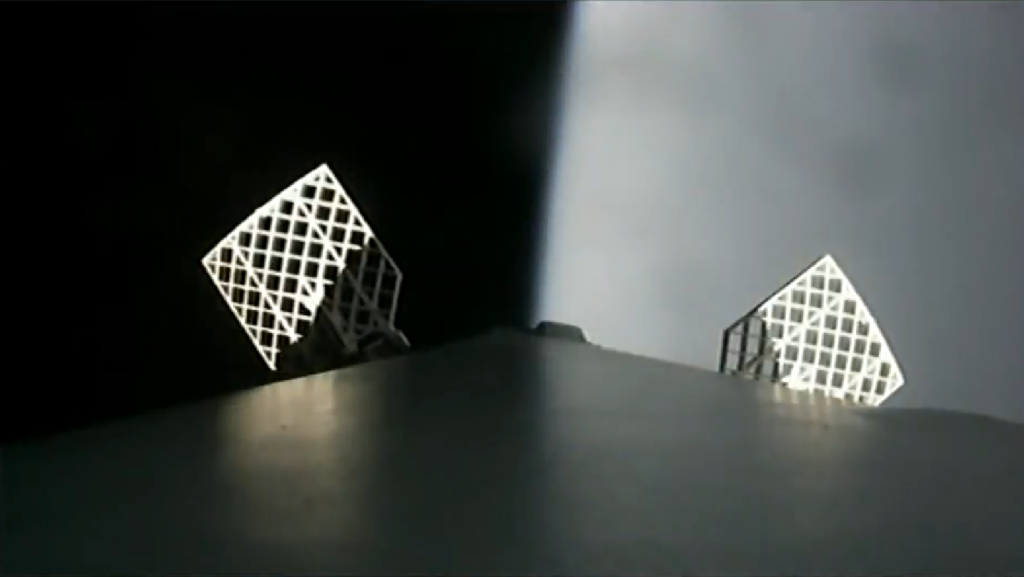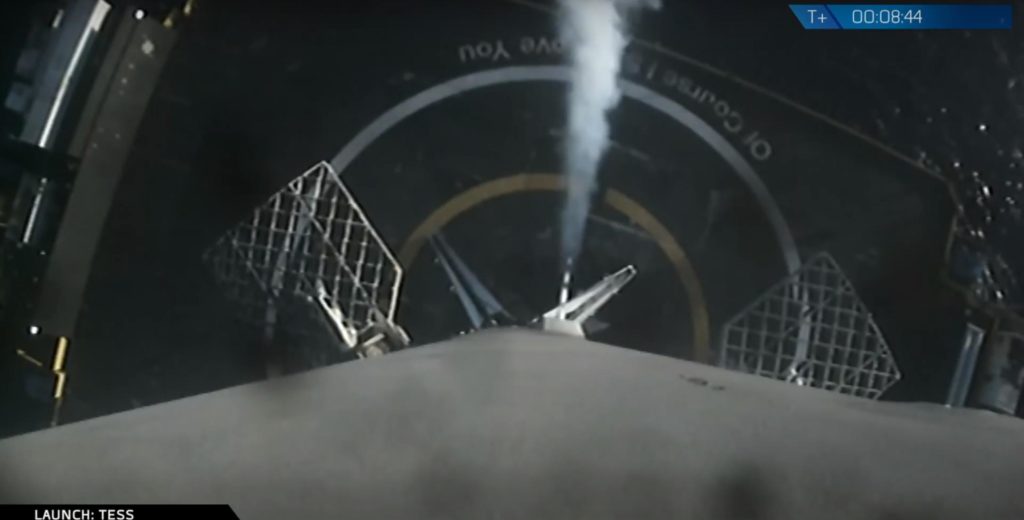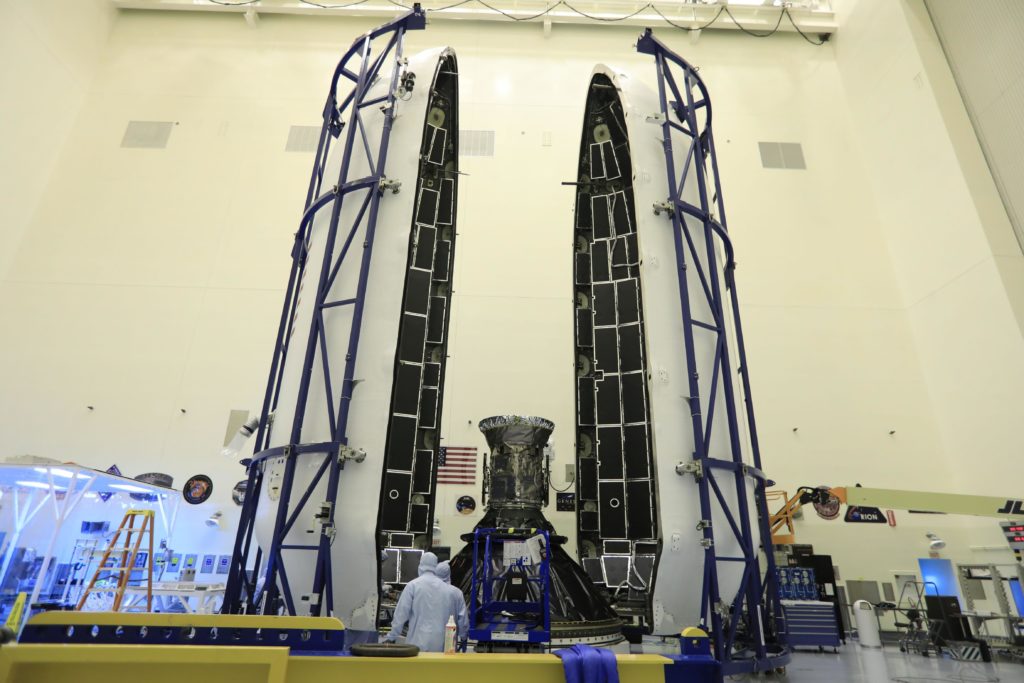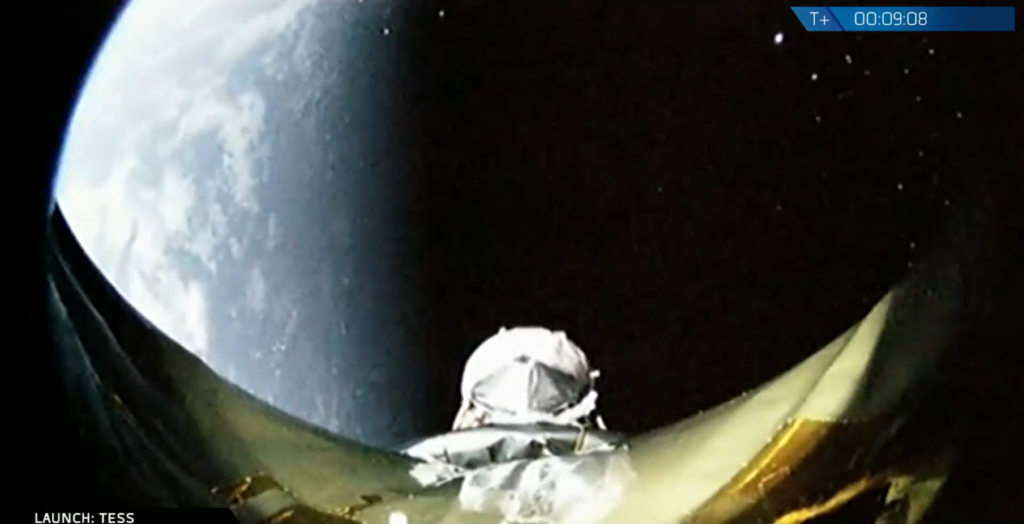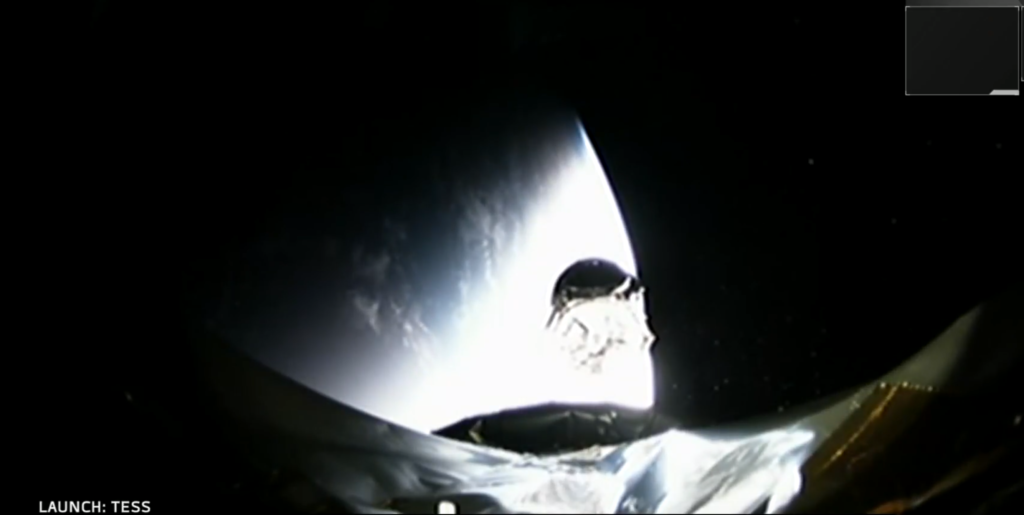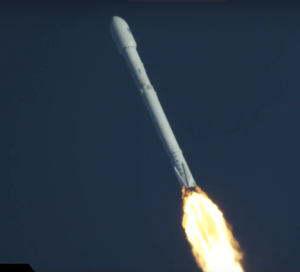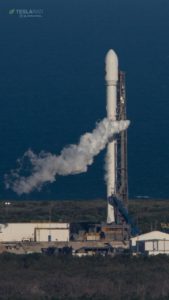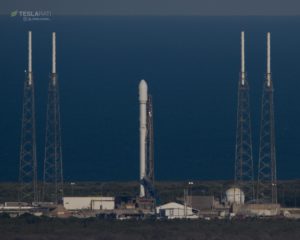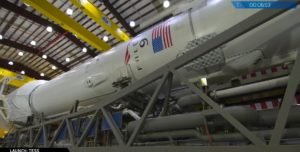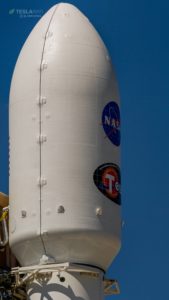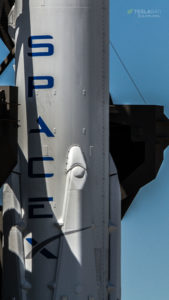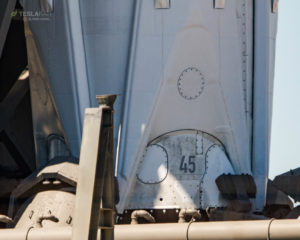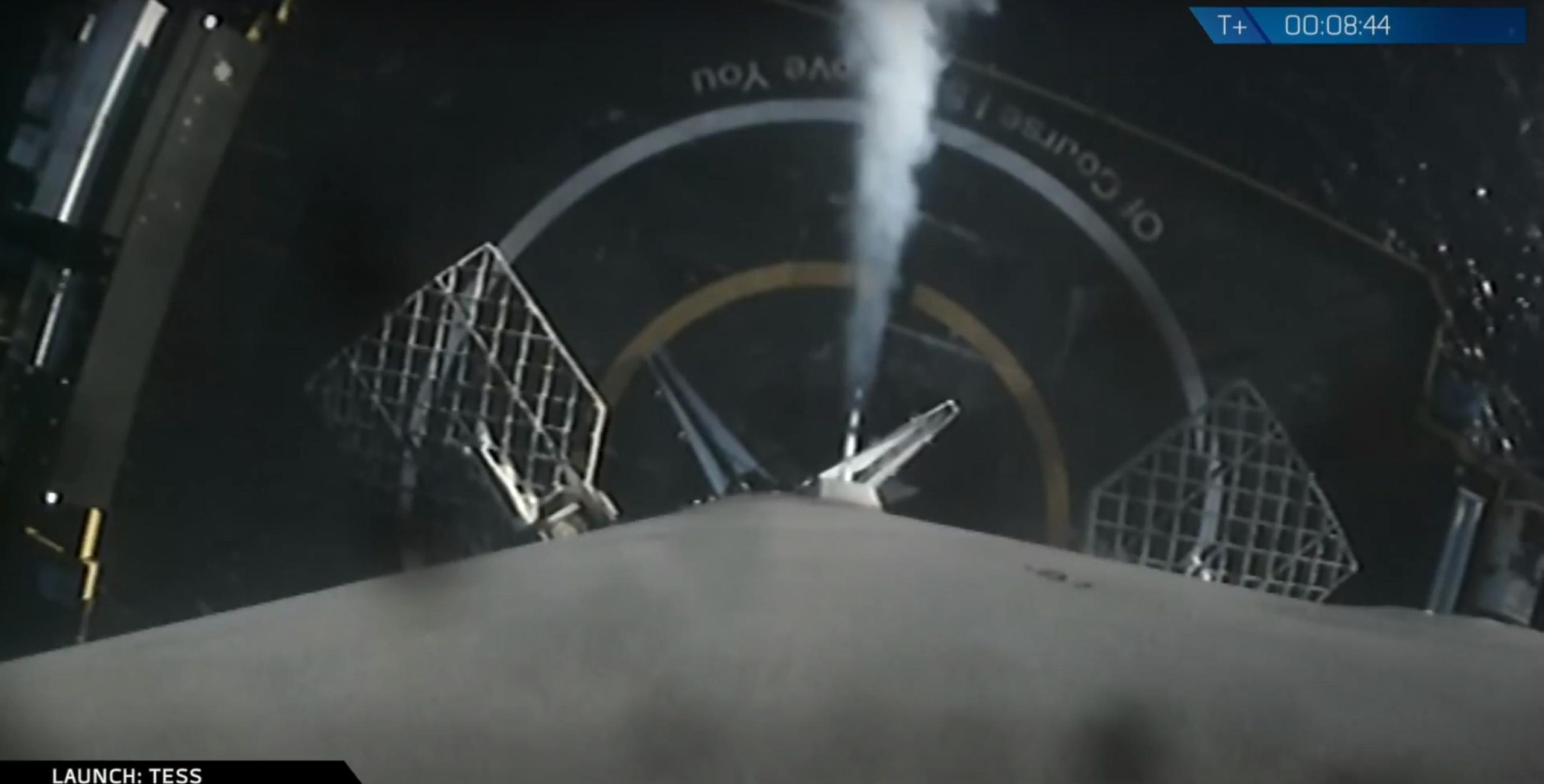
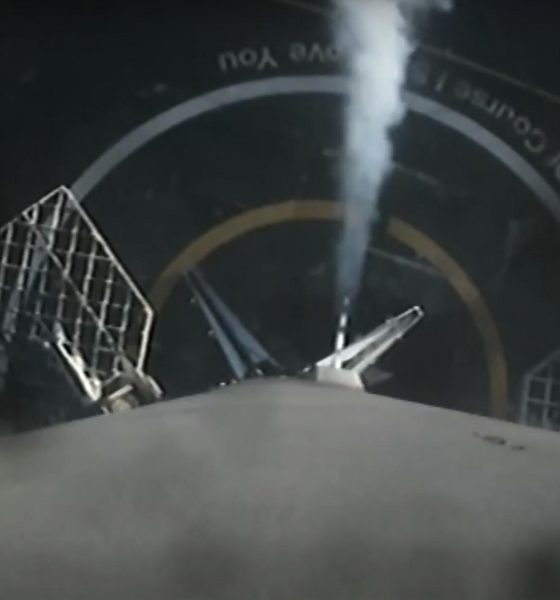
News
SpaceX nails first rocket landing by sea in half a year, sends exoplanet probe beyond the Moon
SpaceX has successfully completed the first drone ship recovery of a Falcon 9 booster in nearly six months, bringing to an end a what will likely be the final drought of by-sea rocket landings in the company’s history.
B1045’s landing was a particularly stunning example of just how far SpaceX has come. By all appearances, the recovery was easily the smoothest yet achieved by the company, with nary a hint of reentry heating visible in the near-flawless live coverage from a camera aboard the booster. Perhaps of even more interest, the landing itself appeared to be exceptionally luxurious, with the booster gently floating down to its final resting perch aboard the drone ship Of Course I Still Love You.
This return-to-landing, so to speak, is SpaceX’s 24th successful Falcon booster recovery in just over three years of true recovery efforts. The last several months have featured an unfamiliar number of intentionally expendable launches, in which SpaceX chose to preclude any attempt at recovery, instead typically gently landing the boosters in the ocean to gather additional flight-test data and to explore the envelope of Falcon 9’s recovery capabilities. In all cases but one (Hispasat 30W-6), these intentionally expended boosters were older, flight-proven versions of the rocket, versions that hadn’t been designed to economically fly more than once or twice.
B1045, however, has just one flight under its belt, and is already pegged for a second launch with CRS-15, giving the booster as few as 50 days to be refurbished and prepped for its second pre-launch static fire (likely the first week of June). This would be an exceptionally fitting case of foreshadowing for SpaceX’s upcoming Block 5 iteration of Falcon 9. If a Block 4 booster can be launched, landed, and refurbished in well under two months, one can only imagine what a Falcon 9 explicitly upgraded for ease of reuse will be capable of.
- Although SpaceX has nail multiple LZ-1 recoveries over the last six months, TESS is the first mission to feature a successful drone ship land since October 30 2017. (SpaceX)
- B1045 soars towards OCISLY, stationed 300 km East of the Florida coast. (SpaceX)
- Falcon 9 B1045’s picture-perfect, gentle landing aboard drone ship OCISLY, April 2018. (SpaceX)
Over the past six months, SpaceX has aggressively expanded their program of orbital rocket reuse, leaping from just three operational reflights of Falcon 9 boosters in the process’ first half-year (Mar-Oct ’17) to seven operational reflights between the following months of December and April. Today, April 18, the successful launch of NASA’s Transiting Exoplanet Survey Satellite (TESS) marks the final launch of a new Block 4 Falcon 9 booster (B1045) – although we can expect as many as three additional reflights of recovery Block 4 boosters in 2018, all new Falcon 9 boosters from here on out will be Block 5s, a final upgrade to the rocket designed to significantly optimize reliability and reusability. The first Falcon 9 Block 5 is expected to debut sometime in May, currently No Earlier Than (NET) May 4.
Impressively, despite the fairly extensive modifications and upgrades – both for reliability and reusability – included in Falcon 9 Block 5, SpaceX’s Hans Koenigsmann stated that the lengthy test campaign in Texas went well and was in fact “faster than we’ve ever had on new Block upgrades [of Falcon 9].” SpaceX themselves have not yet given a specific date for the debut of Block 5, but Hans did partially confirm recent reports that it is now targeting a debut in “early May” with the launch of Bangabandhu-1. Put simply, so long as things go more or less according to plan, 2018 will in every conceivable way usher in the real future of orbital-class reusable rockets – perhaps enabling the sort of responsive, cheap, and reliable access to space long ago promised by CEO Elon Musk.
Koenigsmann: This TESS booster is planned to fly again on the next CRS mission pending NASA approval. #SpaceX
— Michael Baylor (@MichaelBaylor_) April 15, 2018
Science galore
TESS will dramatically increase the number of known exoplanets. It will more than double the number found by Kepler. #NASA #TESS #SpaceX #Falcon9
— Chris G (@ChrisG_SpX) April 15, 2018
Despite its diminutive size and 350 kg mass, TESS is expected to dramatically expand the number of detected exoplanets in the universe, and is tasked with surveying the remaining 95% of the sky left unscanned after Kepler’s famous mission. Ultimately, conservative estimates from astronomers expect TESS to add thousands of new exoplanets to humanity’s current catalog, with perhaps as many as 10% of those discovered likely to be Earth-sized, and thus potential candidates for the first habitable planets to be observed beyond the cozy bounds of our own Solar System.
To give a sense of just how far electronics and satellite technology have improved in the decade since the Kepler observatory was launched (2009), that 1050kg spacecraft was designed to stare specifically at one small segment of the sky (0.25%), scanning it ceaselessly for exoplanets. Despite complex technical difficulties, Kepler managed to discover nearly 1100 confirmed exoplanets, with more than 3000 additional candidates waiting to be confirmed by other spacecraft or telescopes.
- A Falcon 9 fairing during encapsulation, when a launch payload is sealed inside the fairing’s two halves. This small satellite is NASA’s TESS, launched in April 2018. (NASA)
- Smol TESS seen attached to SpaceX’s Falcon 9 second stage. (SpaceX)
- Teeny, tiny TESS separates from Falcon 9’s second stage and begins its journey beyond the Moon, ahead of a productive life of science. (SpaceX)
On the other hand, the 350kg TESS, has been designed to sca the entire sky and may well double, triple, or quadruple the number of known exoplanets in the universe. Falcon 9 may undoubtedly be a bit like using a dump truck when a shovel would do, but the tiny size of the payload can be thanked for the exceptionally gentle booster recovery and the equally (relatively) easy refurbishment soon to follow.
- (SpaceX)
- (Tom Cross)
- (Tom Cross)
- (Tom Cross)
- Falcon 9 B1045 prepares for its first launch in mid-April. (SpaceX)
- SpaceX engineers and technicians have begun an aggressive campaign hoping to recover and reuse fairings ASAP. (Tom Cross)
- Falcon 9 B1045 before its first launch, carrying NASA’s TESS exoplanet observatory, in April 2018. (Tom Cross)
Follow us for live updates, behind-the-scenes sneak peeks, and a sea of beautiful photos from our East and West coast photographers.
Teslarati – Instagram – Twitter
Tom Cross – Twitter
Pauline Acalin – Twitter
Eric Ralph – Twitter

News
Tesla FSD fleet is nearing 7 billion total miles, including 2.5 billion city miles
As can be seen on Tesla’s official FSD webpage, vehicles equipped with the system have now navigated over 6.99 billion miles.

Tesla’s Full Self-Driving (Supervised) fleet is closing in on almost 7 billion total miles driven, as per data posted by the company on its official FSD webpage.
These figures hint at the massive scale of data fueling Tesla’s rapid FSD improvements, which have been quite notable as of late.
FSD mileage milestones
As can be seen on Tesla’s official FSD webpage, vehicles equipped with the system have now navigated over 6.99 billion miles. Tesla owner and avid FSD tester Whole Mars Catalog also shared a screenshot indicating that from the nearly 7 billion miles traveled by the FSD fleet, more than 2.5 billion miles were driven inside cities.
City miles are particularly valuable for complex urban scenarios like unprotected turns, pedestrian interactions, and traffic lights. This is also the difference-maker for FSD, as only complex solutions, such as Waymo’s self-driving taxis, operate similarly on inner-city streets. And even then, incidents such as the San Francisco blackouts have proven challenging for sensor-rich vehicles like Waymos.
Tesla’s data edge
Tesla has a number of advantages in the autonomous vehicle sector, one of which is the size of its fleet and the number of vehicles training FSD on real-world roads. Tesla’s nearly 7 billion FSD miles then allow the company to roll out updates that make its vehicles behave like they are being driven by experienced drivers, even if they are operating on their own.
So notable are Tesla’s improvements to FSD that NVIDIA Director of Robotics Jim Fan, after experiencing FSD v14, noted that the system is the first AI that passes what he described as a “Physical Turing Test.”
“Despite knowing exactly how robot learning works, I still find it magical watching the steering wheel turn by itself. First it feels surreal, next it becomes routine. Then, like the smartphone, taking it away actively hurts. This is how humanity gets rewired and glued to god-like technologies,” Fan wrote in a post on X.
News
Tesla starts showing how FSD will change lives in Europe
Local officials tested the system on narrow country roads and were impressed by FSD’s smooth, human-like driving, with some calling the service a game-changer for everyday life in areas that are far from urban centers.

Tesla has launched Europe’s first public shuttle service using Full Self-Driving (Supervised) in the rural Eifelkreis Bitburg-Prüm region of Germany, demonstrating how the technology can restore independence and mobility for people who struggle with limited transport options.
Local officials tested the system on narrow country roads and were impressed by FSD’s smooth, human-like driving, with some calling the service a game-changer for everyday life in areas that are far from urban centers.
Officials see real impact on rural residents
Arzfeld Mayor Johannes Kuhl and District Administrator Andreas Kruppert personally tested the Tesla shuttle service. This allowed them to see just how well FSD navigated winding lanes and rural roads confidently. Kruppert said, “Autonomous driving sounds like science fiction to many, but we simply see here that it works totally well in rural regions too.” Kuhl, for his part, also noted that FSD “feels like a very experienced driver.”
The pilot complements the area’s “Citizen Bus” program, which provides on-demand rides for elderly residents who can no longer drive themselves. Tesla Europe shared a video of a demonstration of the service, highlighting how FSD gives people their freedom back, even in places where public transport is not as prevalent.
What the Ministry for Economic Affairs and Transport says
Rhineland-Palatinate’s Minister Daniela Schmitt supported the project, praising the collaboration that made this “first of its kind in Europe” possible. As per the ministry, the rural rollout for the service shows FSD’s potential beyond major cities, and it delivers tangible benefits like grocery runs, doctor visits, and social connections for isolated residents.
“Reliable and flexible mobility is especially vital in rural areas. With the launch of a shuttle service using self-driving vehicles (FSD supervised) by Tesla in the Eifelkreis Bitburg-Prüm, an innovative pilot project is now getting underway that complements local community bus services. It is the first project of its kind in Europe.
“The result is a real gain for rural mobility: greater accessibility, more flexibility and tangible benefits for everyday life. A strong signal for innovation, cooperation and future-oriented mobility beyond urban centers,” the ministry wrote in a LinkedIn post.
News
Tesla China quietly posts Robotaxi-related job listing
Tesla China is currently seeking a Low Voltage Electrical Engineer to work on circuit board design for the company’s autonomous vehicles.

Tesla has posted a new job listing in Shanghai explicitly tied to its Robotaxi program, fueling speculation that the company is preparing to launch its dedicated autonomous ride-hailing service in China.
As noted in the listing, Tesla China is currently seeking a Low Voltage Electrical Engineer to work on circuit board design for the company’s autonomous vehicles.
Robotaxi-specific role
The listing, which was shared on social media platform X by industry watcher @tslaming, suggested that Tesla China is looking to fill the role urgently. The job listing itself specifically mentions that the person hired for the role will be working on the Low Voltage Hardware team, which would design the circuit boards that would serve as the nervous system of the Robotaxi.
Key tasks for the role, as indicated in the job listing, include collaboration with PCB layout, firmware, mechanical, program management, and validation teams, among other responsibilities. The role is based in Shanghai.
China Robotaxi launch
China represents a massive potential market for robotaxis, with its dense urban centers and supportive policies in select cities. Tesla has limited permission to roll out FSD in the country, though despite this, its vehicles have been hailed as among the best in the market when it comes to autonomous features. So far, at least, it appears that China supports Tesla’s FSD and Robotaxi rollout.
This was hinted at in November, when Tesla brought the Cybercab to the 8th China International Import Expo (CIIE) in Shanghai, marking the first time that the autonomous two-seater was brought to the Asia-Pacific region. The vehicle, despite not having a release date in China, received a significant amount of interest among the event’s attendees.

